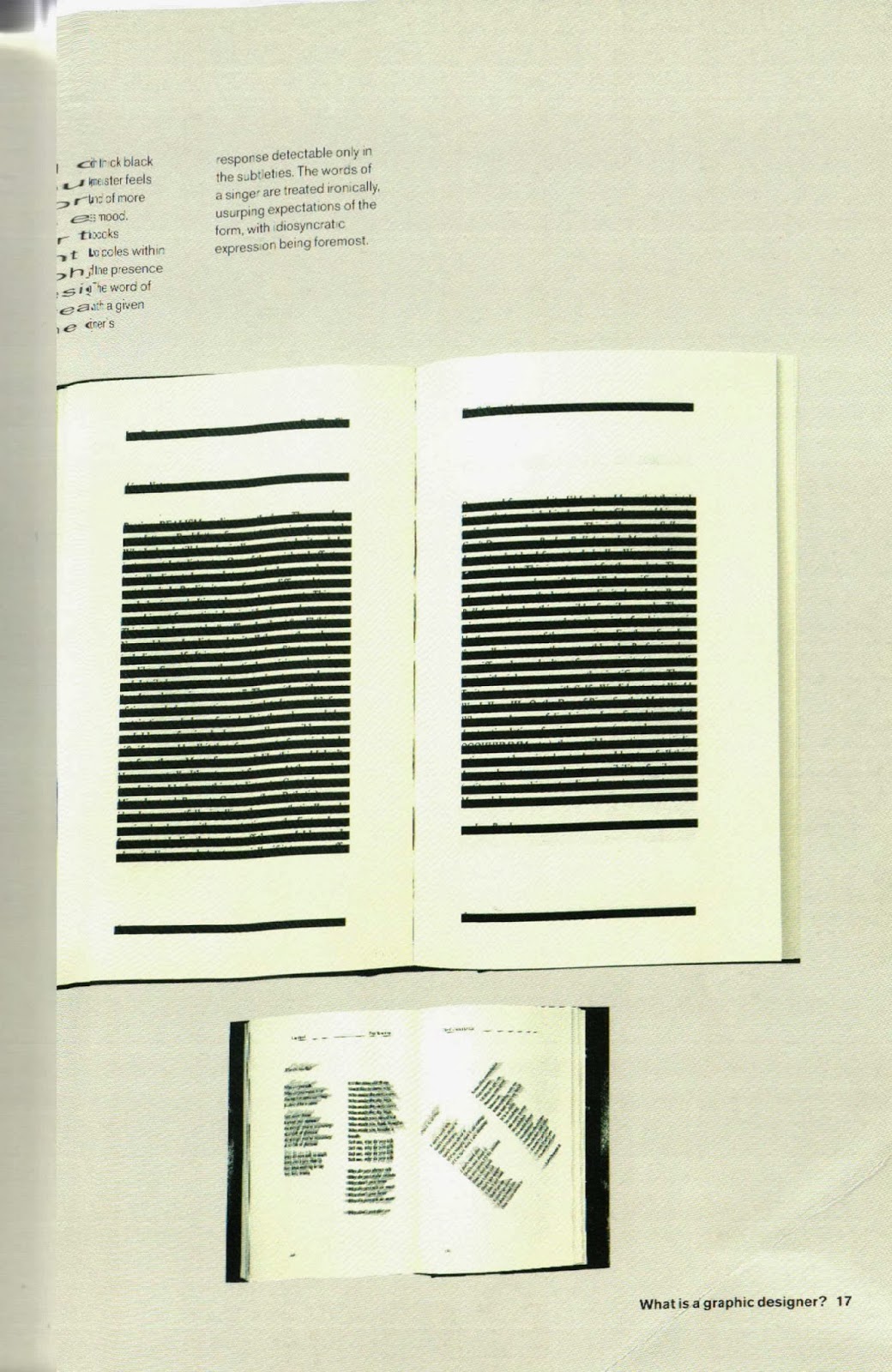I decided to take this book out as it is quite a comprehensive guide to the subject of graphic design. I do not think there is anything that will inform self-set projects, but I was hoping that the book would contain some of the wider historical, social and cultural contexts of the discipline and perhaps some economic contexts too. This would be good for me to put my own subject matter into context, and perhaps create further lines of enquiry.
‘One way of looking at design is to see it not as finished pieces, but the process itself.’ p14
‘I suggest there are two fundamental activities that can be found in the practice of every graphic designer. The first I want to call ‘making sense’.’
‘The second I want to call ‘creating difference’.’
‘The designer wants her work to stand out, not only from the work of other designers, but also from her other work.’ p14
‘The graphic designer then is someone who is always making sense of her material, and mediating it through the forms and codes of visual language.’ p14
‘“Consider the two radical positions in the arts today. One recommends the breaking down of distinctions between genres; the arts would eventuate in on art, consisting of many different kinds of behaviour going on at the same time, a vast behavioural magma or synthesis. The other position recommends the maintaining and clarifying of barriers between the arts, by the intensification of what each art distinctively is,” says Susan Sontag.’ p28
‘A constant magnet is the attraction of the artistic avant-garde – the attitude and set of ideas that set a small group outside the ‘mainstream’, and make their work constantly novel and risky. It also needs to be free of commercial compromise, and it helps if the political ideas are extreme. This ‘cutting-edge’ formula has underpinned much design criticism, and the pronouncements of many designers.’ p28
‘Design has a client who provides the intention for the work, the aims and the outcome by which it must be judged.’ p28
‘There is a minute amour of design work where the designer herself is the client, a kind of ‘acts gratuit’. But this self-publishing does not alter design’s recognisable conventions’.p28
‘Art is connotative, associative, implicative; it revels in ambiguity. Its function and its form are inseparable. Art is connotative, associative, implicative; it revels in ambiguity. Design is precise, denotative, explicit. It is a mediation, a structure, a method. It connects to its content like dance attaches to misc, or cooking to food.’ p28
‘This rewrites the question: ‘Can design be as powerful, complex, emotive and enduring as the best art can be?’ The answer to this question is an unequivocal yes.’ p28
About Graphic Authorship:
‘It might sound like ‘writing about graphic design’ but the term seems infinitely re-interpretable without one clear, agreed definition.’ p88
‘The term carries with it an air of stridency and rebellion - a wish that graphic design play its part in putting the world to rights and for designers to break away from their restrictive commercial clients.’ p88












Leave your comment